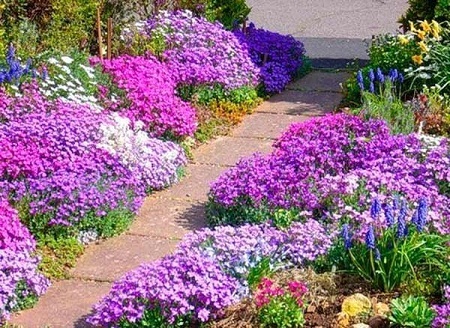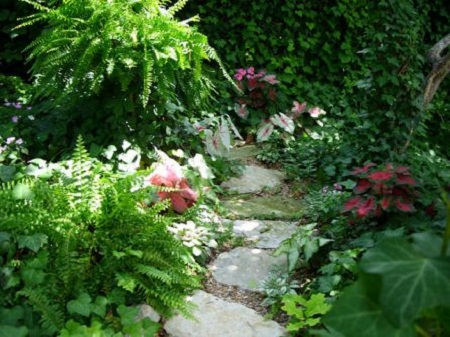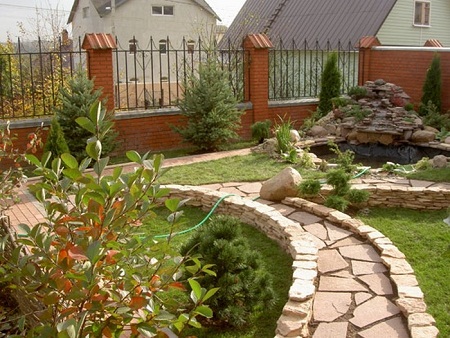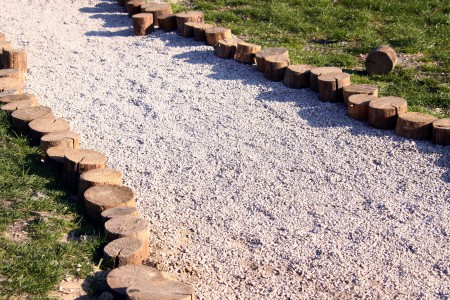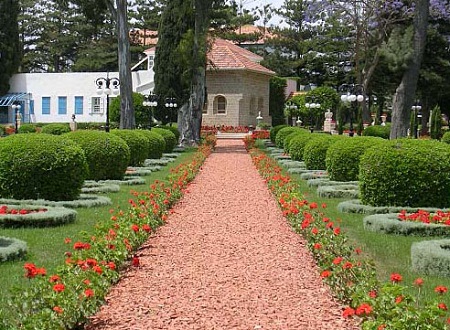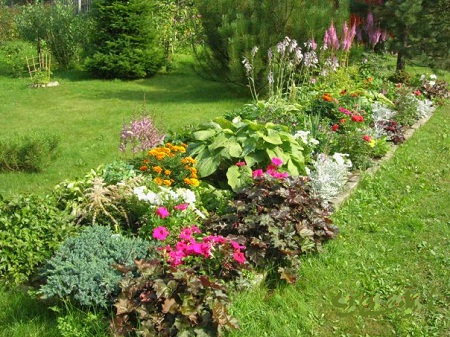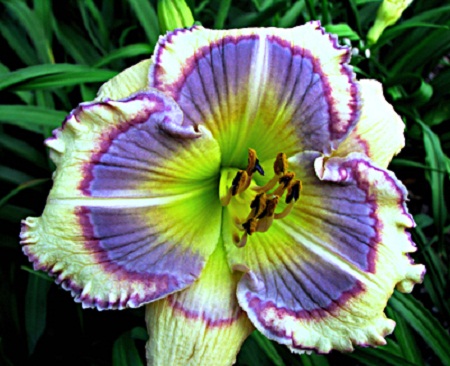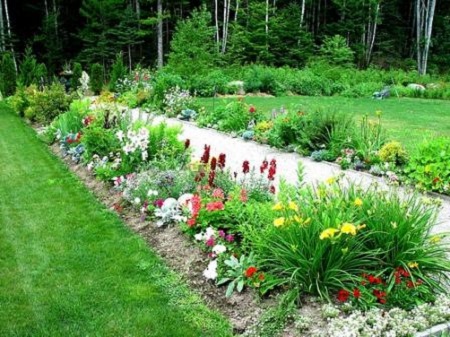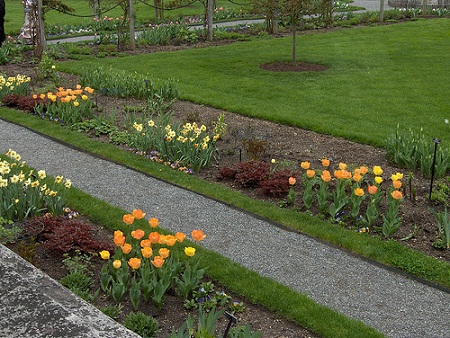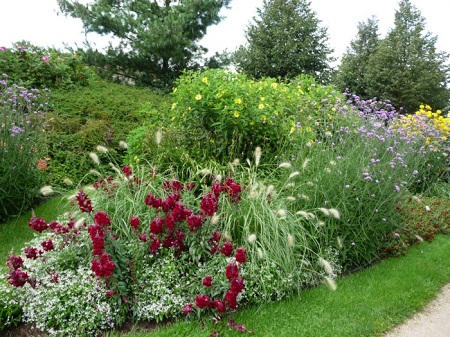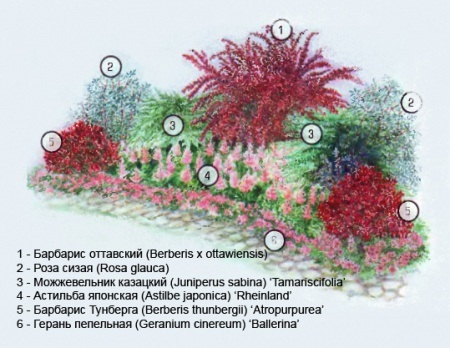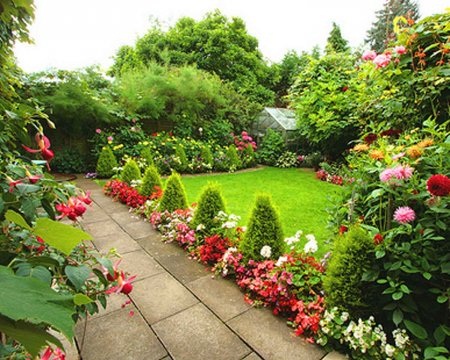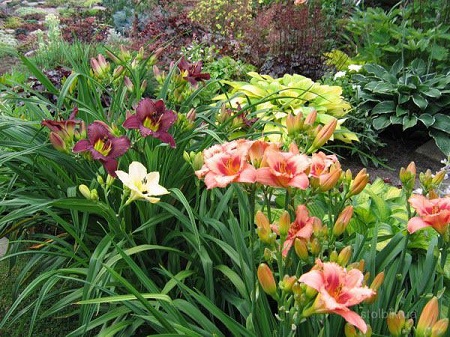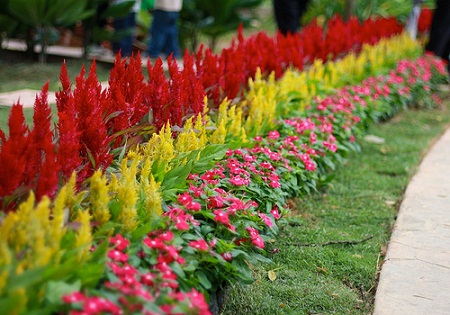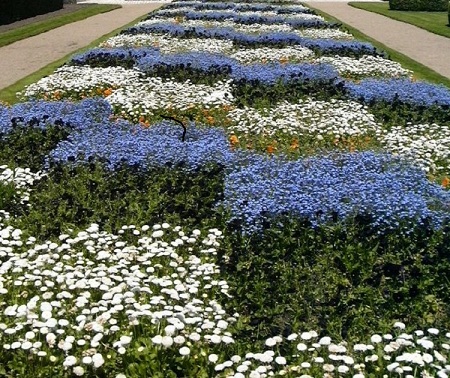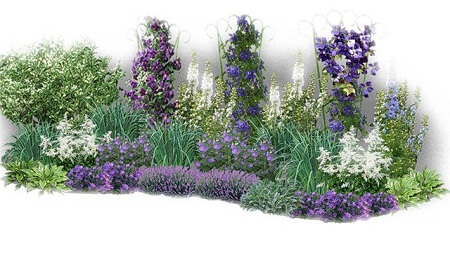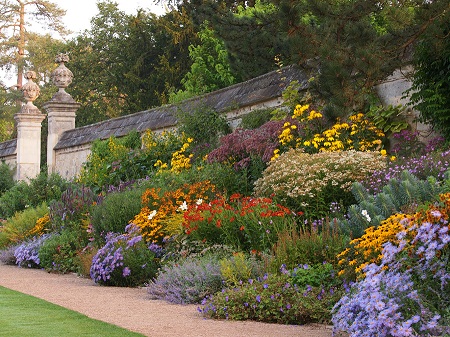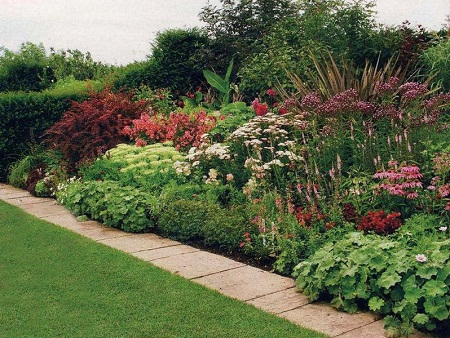Creating a cozy and unique design of the household plot, the owners, through logical reflection or assessment of practical needs, will come to the conclusion that it is necessary to plan and construct garden paths. The next question that arises about this is the option of their paving.
Content
Construction and decoration of garden paths
Professionals who have a great practice in the production of paving paths and so-called enthusiasts, landscaping their plots, using a variety of methods, give a positive characteristic not to the complex, interesting and amazing process of paving that results. The first pluses, which are noted by people who have tried the method of paving - increased comfortableness of the created conditions, aesthetically attractive appearance. For example, the stone tracks after the last rain will be shaken out quickly enough and dry, in the cold season they will not create problems when cleaning from ice and snow.
Slightly deeper into the process it becomes clear that paved paths prevent the subsidence of the upper layers of the earth and their erosion, as well as the spread of dirt formed on the site. Still designers attribute to pluses and accent attention that the paved path on a site becomes not only a bright fragment of a decor, but also will unite its various zones.
Decorating garden paths with your own hands
Experts advise - paving the path do not forget about the need to design it with a curb. It will serve as a rigid anchor for the edges of the path, and also protect its edge from deformation, especially under the action of various climatic conditions. Border - a condition not mandatory, but it is he who can advantageously emphasize and preserve for a longer period an unusual, original way of paving. Basically, the curb is not used only when the path is planned from natural stone of various configurations or concrete slabs.
Such a fence as a curb can protrude 5-15 cm above the ground. It can be made from different building materials: from special concrete blocks for curbs, from wood or concrete, natural stone or brick. The most commonly used material for the curb is a red brick. Mount it with the butt in the ground. This version of the edging does not require large financial investments and special skills. If the shape of the red brick curb is planned with bends - you should prepare the cement mortar, which will be needed to fill the seams and barking.
It will be interesting to look a curb made of podtovarnika. Podtovarnik - chocks with a curved cut, in a length of about half a meter, a diameter of about 10 cm. The crookedly cut end is better than straight, because it allows unobstructed discharge of precipitated precipitates, preventing in turn rotting of the upper part of the wooden fragment. In order to maximize the life of this curb, it is necessary to apply an antiseptic to the chocks and wrap their bottom part with tar.
Manufacturing of a border from natural, large, flat stone occurs as follows:
- the original material is laid to a certain depth and covered with earth;
- when the stones are not large enough - decorate the border by resorting to a solution.
In cases where a garden path is planned from slag, sand, gravel, pebble - curb is mandatory. The most durable and durable will be the curb of concrete, stacked on a concrete foundation.
Making the path to the house
A successful combination of mixed construction materials (brick, tile, wood, gravel), will add to the personal plot of splendor and originality. All tracks on the site must be elegant and practical at the same time. And those that are located directly near the residential building should also guarantee a problem-free and comfortable approach, and perhaps even an entrance, to it under any weather conditions.
How to decorate a garden path
To make the track look beautiful, you should first think over the option of decorating it. When selecting, you should take into account the material from which the track is made and its color. For example, plants with flowers of a similar shade (calendula or marigolds) or contrast, which would emphasize the orange shade of the material, are suitable for a brick path.
If the path is cement and has an inexpressive color, then the plants along it should attract all attention to themselves, i.e. they must be distinguished by the brightness of color and the grace of form.
When decorating garden paths, you can use both perennial, and annual, and perennial, but, when choosing the latter, the decor of the track will have to be thoroughly corrected and restored.
In the event that the paving of the track was done beautifully and from expensive natural materials, then on each side it is not better to organize the strip of lawn - it will emphasize the attractive look and color of the material. At a distance you can plant flowering plants - hosts, irises. At the points where the paths intersect the designers recommend to equip the beds with creeping and rapidly growing plants, a very successful option will be planting a ground-covering rose.
Which plants are planted along the tracks
An unequivocal answer to the question, what colors it is better to perform the design of paths in the garden, of course, you can not give. The choice will depend on the style of the landscape, its color scheme, and the personal preferences of the garden owners. But general recommendations in this regard can still be taken into account.
For example, it will be very attractive to look at the paths in the frame of the lilynites planted along them. The originality of the plant composition will be given in a definite order of the daylily with different shades of colors: burgundy, yellow, orange, lilac, the second attractive moment - different periods of flowering, if you pick the sorts of the daylily correctly, then the path will always be surrounded by flowers - until the flowering of one variety ends, flowering of another.
If a grassy border was erected during the design of the droshky, then sedge or cereal bushes, other plants with mottled leaves or ornamental inflorescences, can be planted along it. Brightness throughout the summer will give the path that frames the periwinkle. Iris, hyacinths, daffodils or tulips are also suitable for planting, but it should be remembered that they blossom once a season, in the beginning of spring. Blossom throughout the summer will, for example, tender daisies.
The framing of the tracks will look more interesting if you pick up the plants and plant them in such a way as to make the tiers. In the first of them, of course, will be creeping or undersized:
- vitality or purification,
- periwinkle or saxifrage,
- thyme or lungwort,
- coin-eaten verbee, primrose.
The second tier can be formed with medium-sized crops, it can be annuals or perennial creeping coniferous plants, bananas, high primroses.
From the tall, to create the third tier, you can plant lilies and phloxes paniculate, astilba, fanaris. You can also plant colony conifers. The plants used in one composition must be combined according to the shape and color of the leaves and flowers, the height of the layers should be such that the plants are clearly visible, do not shade each other.
Landing on uneven areas of creeping or undersized plants will help visually brighten up the steps and bumps on the surface of the soil.
With a difference in the height of the ground, the track has to be equipped with steps. You can decorate with flowers and steps, moreover, competently selected their kinds will help to make an even flight of stairs or an uninteresting even section of a path quaintly curved. To do this, it is required to plant large, branched plants at several points, which will overlap the overview of the continuation of the path.
It is also possible to plant plants of the small-petalled type, which will grow beyond the edge of the path, thereby concealing all the errors made during its construction.
Decorating paths in the garden with flower beds
flower borders
Often as a finish of the tracks use flower beds of certain species. The simplest but attractive enough dense strip of plants, called a flower border, can have different widths. It can be used carpet, several species, growing very compact. You can also use higher plants, planted in several rows. The smaller ones are planted closer to the path, the subsequent higher rows, with proper planning, should close with them. The most commonly used for this purpose: marigolds, verbena, clarification, ageratum.
breasts
The wider and variegated flower beds located along the tracks are called rabatkami. The recommended width is from 0.5 m to 1.5 m. If the track is long, then the brooch should be made intermittent. Such beds can be two-sided or one-sided. The latter are usually located near fences or walls of buildings, tall plants should be planted closer to walls or fencing.
If the track lies on an open space, then equip a two-way rabatku. Several plant species used in it are planted in the form of ornament or parallel strips. It is also proposed to select a certain color range: white-pink, pink-burgundy, purple-yellow, yellow-blue.
In a two-sided plantation, tall plants are located along the middle line.
mixborders
The mixborders look more natural and at ease, they are usually used for ennobling the territory near buildings or fences, for bordering paths. the width of such a mixed flower garden can be from one and a half to four meters, length - up to tens of meters. For mixborders, you can pick up about two or three dozen different types of plants, but in such a way that the flowering period follows one another. When planning a mixboarder with a width of more than one and a half meters, it is desirable to provide for the presence of a path in the middle of it, or at least a passage, so it will be more convenient to take care of flowers and watering.
The plants in the mixborder are placed in three groups - the tallest of them should bloom at the end of summer, the middle ones in June-July, the low perennials with the spring flowering period, it is desirable that they have bright, decorative leaves. Early-flowering bulbous plants are placed closer to the middle, their leaves, which have wilted after flowering, will hide bright plants located in the foreground.
Planting perennial crops, we should not forget that over time they will grow. The space left between them in the first year can be filled with annuals.



